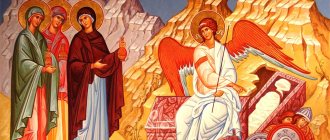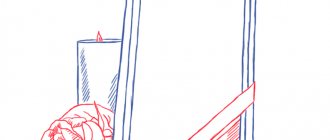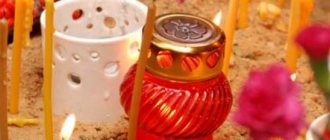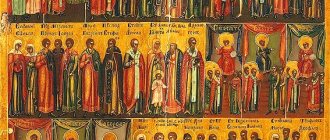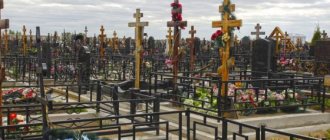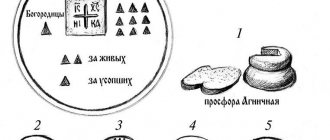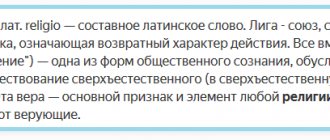What to do on Easter
Christ ended his earthly life, crucified on the cross next to the thieves. On the third day after his martyrdom, Jesus resurrected, giving people joy and hope for eternal life. Bright Sunday is a memory of that great day.
The holiday symbolizes the triumph of life over death. All churches hold services from late Saturday evening until late Sunday night. True believers visit churches to welcome the news of the resurrection of Christ. Then people devote all their time to fun, festivities, celebrating a great event.
Until now, many people visit the graves of deceased loved ones on this day. However, the church charter does not recommend coming to the cemetery on a bright holiday and darkening the celebration with sadness and sorrow. Parents' days are set aside for visiting the burial places of loved ones.
The main one is Radonitsa. It falls on the second day after Easter week and is intended specifically to remember those who have passed on to another world. In Radonitsa you can clean up the cemetery, bring colored eggs and Easter cakes there, and have funeral meals at home. These procedures are necessary to preserve the memory of the deceased, as well as to show your respect and love for him. On Radonitsa, memorial services are held in churches, during which the Church prays for all the departed.
When are the deceased buried on Easter Sunday?
The funeral, if a person dies on Easter, is held the next day simultaneously with the funeral service. Before preparing a funeral ceremony, you should consult with a priest. Often on Christ's Day, cemeteries are closed, and the clergy are busy organizing the festive service.
The reason why a Christian dies is also important:
- Natural death due to illness;
- A relative died tragically;
- Suicide;
- Forced death.
If you die on Bright Week due to natural causes or as a result of a tragic accident, then there are no changes in the conduct of mourning events. The body is buried on the Monday after Easter Sunday. A special Easter constriction is held at the coffin, and a full memorial service is organized on the memorial day - Radonitsa. The Great Breviary states that burial on Easter holidays is performed with joy and thanksgiving.
Suicide is a mortal sin; unauthorized interruption of life means the refusal of the church to bury the newly deceased according to Orthodox rules. Burial is allowed to take place without a funeral service, 3 days after death. If it is impossible to store the body for such a long time, earlier burial dates are allowed.
For suicides, you cannot order funeral liturgies, memorial services, or write notes. Grieving relatives (wanting to soften the fate of the deceased) can pray for him at home - this does not contradict Orthodox rules.
Murder disguised as suicide is a special case. Finding out the truth takes time; a dead body does not have that kind of time to wait for burial. Relatives can ask the clergyman to conduct the funeral ceremony and conduct a church commemoration. But, if the deceased is actually a suicide, the mistake will become the sins of the offspring.
Bury on Easter
Church canons allow funerals on Easter, and funeral services are also permitted. Just keep in mind that services are held in churches on Saturday evenings and at night and on Sunday mornings, so the clergy are busy with other things. It is recommended to meet with the priest in advance (on Saturday or earlier) and discuss the possibility of a funeral service on Easter day. The possibility of burial on the day of joyful Easter is permitted by church laws.
The funeral service is performed on Easter days according to a special rite; instead of the usual prayers, Easter chants are heard. Most of the usual prayer chants are omitted, since Easter is a holiday of triumph, not sorrow. A full memorial service can be held at a later date.
Priests allow funeral services in absentia on any day after burial and the end of Easter week. It is carried out if:
- the funeral service after the funeral was not performed at the required time;
- death occurred in emergency situations;
- there is no temple within an accessible distance;
- the deceased was buried hastily (in a mass grave, during military operations, etc.).
In the service commemorating the resurrection of Christ, there is a request to resurrect the deceased for eternal life. After the service, the priest gives the relatives soil, which must be poured onto the grave of the deceased. An absentee funeral service is also possible for funerals held after Easter.
How to remember if a relative died during Lent?
Christians believe in the immortality of the soul, so commemorating deceased relatives is important and filled with deep meaning. The newly deceased has passed his life's path; according to his deeds, he will give an answer and end up in the kingdom of God or hell. But close relatives can soften his fate with prayers.
A special period of time deserves special attention: Lent and the bright holiday of Easter.
Lent is a period of mourning, abstinence, thoughts about the soul and a kind of preparation for the afterlife. During this period, the death of a significant relative is perceived as especially tragic. Loved ones are often lost and have difficulty in how to pray and remember if a person died a week before Easter.
The Orthodox Church gives a clear sequence of actions, but various signs and superstitions in this regard are widespread among the people.
In the distant past, it was believed that God called the maximum number of souls during Lent. Statistics from funeral agencies confirm that the spring months see the largest influx of buyers.
Recommendations from priests
During Lent, the deceased are remembered in a special order:
- Liturgical commemoration is not held from Monday to Friday, only the Full Liturgy is served on Saturday and Sunday.
- There are no funeral services.
- Funeral litany and memorial services are served only on the 1st, 2nd, 3rd, and 4th Saturdays of Great Lent.
- The funeral service for the deceased can be held on any day.
Traditional memorial rituals on the 3rd and 9th days are transferred to the two Saturdays closest to the date of death. Likewise, the forties during the period of fasting are moved to Saturday. The same goes for organizing a funeral meal.
Death on Easter
Easter is a holiday for everyone. Some go to churches, read prayers, congratulate others on the occasion, and observe all traditions. Atheists treat the solemn day as an interesting event, when they organize lavish feasts, paint eggs, and bake Easter cakes. On the issue of death during the Easter period, popular beliefs and church guidelines differed.
According to popular beliefs, if a person dies during this bright celebration, on any day of Easter week, then his soul will go straight to heaven. She will get there without sorrowful ordeals, the Last Judgment. The same beliefs claim that at this time souls pleasing to God are called to God. Previously, people who died on Easter days were traditionally buried with a colored egg in their hand.
Results
Question: is it good to die on Easter, does the answer mean positive or negative? If you believe popular superstitions, this is very good. An atheist will answer in the negative; in his opinion, dying is always bad. The priests explain: it depends on whether the deceased wanted to be saved, whether he was open to God, and whether he participated in the sacraments of the Church. The Lord sees the desire and sends grace. If there was no aspiration, any church rituals are powerless, the gift of Eternal Life is inaccessible, the date of death is not important.
Why you can’t bury with a wedding ring and other signs
Many also say that it is necessary to remove the wedding ring from the deceased. Under no circumstances should you bury a deceased person with a wedding ring. There is a belief that a spouse may die soon. In addition, it is also worth removing all jewelry, as this may attract the attention of looters.
Why you can't bury with your eyes open
After death and until the moment of burial, it is necessary to ensure that both eyes are closed. Sometimes coins are placed on them to prevent muscle spasms. Then they are taken away. There is an interpretation regarding this sign. They say that if a dead person’s eye is open, then in this way he is looking out for his companion, who will soon follow him. This is why you should be careful.
The best article for you, go to: Is it possible to bury on Sunday
Toys for a deceased child
There is also a sign that you cannot bury a child without toys. They are either placed in a coffin or tied to a cross. It is believed that the child will need them in order to play with them in another world. At children's funerals, it is customary to bring light-colored flowers, preferably white, especially if the death is a girl.
Many also say that it is worth waking up everyone in the house at the moment when a funeral procession passes by the windows. Why can't you sleep when a person is being buried? This is explained by the fact that the soul of the deceased can take with it the soul of the one who is sleeping. It is for this purpose that it is necessary to wake up everyone in the house in order to avoid the loss of loved ones. There is no need to feel sorry for the sleep of a small child at such a moment. It’s better for him to cry from a sudden awakening than for something irreparable to happen to him.
Why you shouldn't bury pets
No one will give a definite answer to this question. It is believed that only the human soul is capable of resurrection and joins the Lord. And the souls of domestic animals are not like human souls, and therefore do not need burial. In addition, there is an opinion that when decomposed, the corpse of an animal can provoke an epidemic of certain diseases.
Question and answer
Is it still possible to hold an Orthodox funeral on Easter Sunday?
There is such a possibility. The funeral service for Easter should be coordinated with the church. A trusted specialist from City Ritual Service LLC can help with this.
Are the funerals of an Orthodox Christian organized earlier or later than the third day?
If extreme situations arise - wars, epidemics, natural disasters, then an Orthodox funeral can be held before the third day. Due to the nature of the work of government and medical institutions, it happens that funerals are held later than the third day. Both are permitted depending on the circumstances.
Funeral ritual for the deceased
A funeral is a sad event for any family and relatives. It is one of the main rituals in Christianity. The ritual of burying the body of a deceased person expresses the parting of people with the deceased. There are several ways to perform this ritual:
- burying the body in the ground,
- committing the deceased to cremation.
History of origin
This ritual is considered important for Christians. The Church considers the conduct of earthly life, during which the body must behave in such a way as to subsequently become incorruptible and immortal. Death is considered only birth into eternity. After death, the body simply falls asleep, and the soul goes to a meeting with the Lord, as well as to a private judgment. And you should carefully prepare for this process. If the preparation of the body for the burial process is carried out with dignity, then by this the believers show their hope for the resurrection of the dead.
Some rites of human burial are in some way very reminiscent of the sacrament of baptism. This is explained by the fact that during baptism a person is reborn from a sinful life for godly and holy service to the Lord, but through death he goes through the process of rebirth for a better, new, eternal life next to Christ.
The first memories of how the burial rite should be carried out are described in the Gospel. It talks about the burial of Jesus Christ. In Orthodox rites there are also some rules that should be followed during preparations for the funeral, as well as during their conduct.
The best article for you, go to: What they bring to church for the funeral table
Features of preparation for burial and the ceremony itself
Before placing the body in the coffin, it must first be washed and then dressed. Only after this the corpse should be placed in a coffin. When choosing clothes, you should adhere to certain recommendations:
- Ordinary people should be buried in civilian clothes, military personnel, firefighters and police officers should be buried in uniform.
- Attire for men should consist of: a classic suit in sober tones, a shirt, underwear, socks, shoes or slippers and a tie (optional).
- Women's clothing: headscarf, dress, underwear, shoes or slippers and tights or stockings. Preference is given to clothing in light colors.
- The clothes of unmarried girls can consist of: a wedding dress, veil, shoes, underwear.
- Many people say that the color red should not be used at funerals. Why can’t people be buried in red clothes and dresses? There is a belief that this color will attract other deaths of the deceased’s loved ones.
- The main requirement for clothing is comfort. Preference is also given to clothing in light colors. It is recommended to use new clothes, but due to the difficult economic situation, you can also use the ones you have already worn. It must be clean, washed and ironed. If there are no suitable clothes in the house where the person died, then under no circumstances should you give yours away, as this may lead to some problems in the future.
Easter is a symbol of Eternal Life
The religious holiday of Easter, symbolizing the resurrection of the savior of the human race, Jesus Christ, is perceived ambiguously by many of our citizens. Some believe that on Easter one should only rejoice, go to visit, congratulate everyone on the resurrection of the Savior, visit the temple to light a candle for health and bless gifts. Others prefer to go to the cemetery for Easter, so that there, at the graves of their loved ones who have passed into Eternity, they can celebrate this Great Day.
The rite of removal and burial of the Shroud in the church: video
The rite of removal and burial of the Shroud on Good Friday is a truly special service, which is performed only once a year, and is unlike any other service. Every believer should see this with his own eyes.
The ceremony of removing and burying the Shroud on Good Friday has not only symbolic, but also spiritual significance.
This is how clergy and believers remember the suffering and passion of Christ that he experienced in the last days of his life on earth. The Shroud in this sense acts as a material image, with the help of which one can clearly feel the atmosphere of that tragic day.
